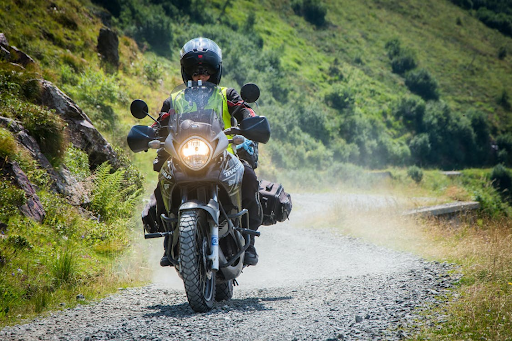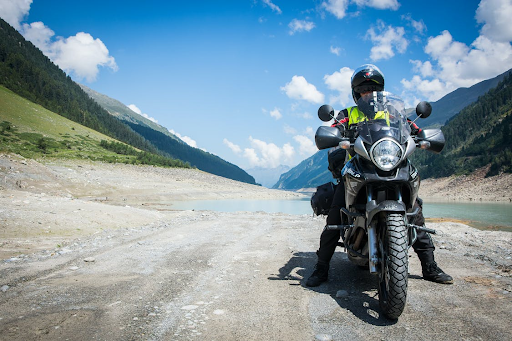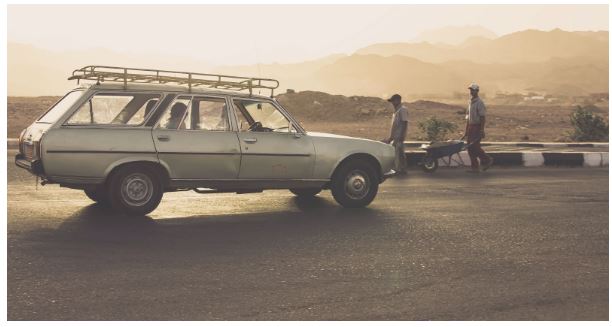Top Motorcycle Touring Tips That Will Elevate Your Experience
Motorcycle touring is one of the most fun and freeing ways to travel. But it’s also important to make sure that you’re taking care of yourself both mentally and physically. If you’re thinking about going on a motorcycle tour, here are some tips that will help make your experience even better.
Keep safety a top priority
This may seem to be an evident tip, however, it’s one that bears repetition. No matter how experienced you are as a rider, or how well-prepared you are for your trip, safety should always be your top priority. There are a number of ways to stay safe while on the road, but some of the most important include wearing proper gear (including a helmet), being aware of your surroundings at all times, and following all traffic laws. When stopping for long periods of time, make sure to take the weight off of your bike by using the kickstand.
Also, you can add safety gear to your motorcycle. Among the popular safety customizations and features are motorcycle windshields, crash bars, stability controls, and anti-lock brakes to name a few. There are also tinted motorcycle windshields that provide additional protection from sunlight and headlight glare. Another safety precaution you news to do is to stop frequently to take breaks, both for yourself and your bike. Overheating is a common problem on long trips, so it’s important to keep an eye on your temperature gauge and pull over if needed. By taking these precautions, you can help ensure that your trip is enjoyable and incident-free.
Have a realistic assessment of your riding skill
One of the most important motorcycles touring tips is to have a realistic assessment of your riding skill. If you’re an experienced rider, then you’ll likely have no problem tackling long distances and challenging terrain. However, if you’re new to motorcycling or haven’t been on a bike in a while, it’s important to start slow and build up your skills. There are plenty of great resources available online and at your local library that can help you brush up on your riding skills. It’s also important to think about the type of bike you’ll be using. A heavier bike is going to be more challenging to ride long distances, so if you’re new to touring, it might be best to stick with something lighter. Also, if you’re planning on doing any off-roading, make sure your bike is properly equipped and that you have the necessary skills to do so safely. Once you feel confident in your abilities, then you can start planning longer trips and more challenging routes.
Planning ahead for your trip
Once you’ve got a good understanding of your own abilities and what kind of bike you’ll be using, it’s time to start planning your trip. When you’re mapping out your route, be sure to take into account the weather and road conditions. You don’t want to be caught in the middle of nowhere in a rainstorm with no shelter. It’s also important to make sure you’ll have enough gas to get you to your destination. Nothing ruins a motorcycle trip quite like running out of gas in the middle of nowhere. By taking the time to map out your route, you can avoid getting lost and wasting precious time on your trip. Planning ahead will also allow you to make sure you hit all the highlights of your chosen destination.
Another important tip for motorcycle touring is to pack light. You’ll want to bring along essential items like a change of clothes and toiletries, but try to avoid packing too much stuff. You don’t want your bike weighed down with unnecessary baggage. The less you have to carry with you, the better. When it comes to packing for a motorcycle trip, less is definitely more. However, there are some essential items you’ll need to bring with you, such as a first-aid kit, tools, and extra parts for your bike in case of emergencies. Finally, be sure to take advantage of rest stops along the way. These are a great opportunity to stretch your legs, grab a bite to eat, and use the restroom. If you plan on riding for long hours, rest stops are a necessity.
Make sure you are properly ready for the trip
Before embarking on any motorcycle tour, it’s important to make sure you’re properly prepared. This means having the right gear, a well-maintained bike, and a good understanding of the route you’ll be taking. If you’re unsure about anything, it’s always best to err on the side of caution and consult with an experienced rider or mechanic. Another preparation you need to do is to pack appropriately for the weather. Depending on where you’re touring, the weather can vary greatly. Make sure you pack accordingly so that you’re prepared for whatever Mother Nature throws at you! Most importantly, have a backup plan.Despite however well you intend, there is forever an opportunity that one thing may fail . That is why it is vital to possess a backup arrange in situ, simply just in case. Whether it’s an alternate route or a place to stay if you run into trouble, it’s always good to be prepared. By taking the time to prepare ahead for the trip, you can avoid any potential problems down the road and make sure your trip is as enjoyable as possible.
Make sure to relax and enjoy yourself
Finally, one of the most important things to remember when going on a motorcycle tour is to relax and enjoy yourself. This is a top motorcycle touring tip because if you’re not enjoying yourself, then what’s the point? This is supposed to be a fun experience, so don’t get too stressed out about planning everything perfectly. Take the time to smell the roses, as they say, and savor the experience. Motorcycle touring is supposed to be enjoyable so make sure to make the most of it. Go on new adventures, meet new people, and create memories that will last a lifetime. It’s all about the journey, not just the destination. If something goes wrong, roll with it and know that you’ll eventually look back on whatever happened and laugh about it.

These are just a few of the many things that you should keep in mind when planning a motorcycle tour. By following these tips, you can help ensure that your trip is safe, enjoyable, and memorable. So what are you waiting for? Start planning your next adventure today!

